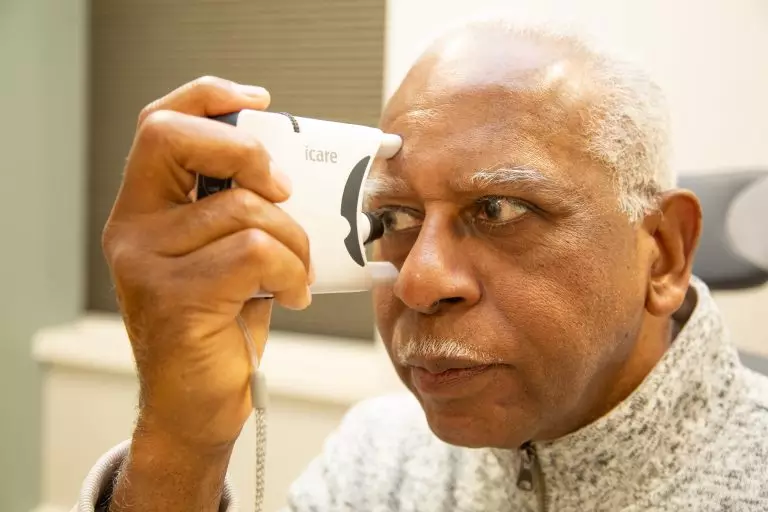Glaucoma is an eye disease in which the passages that normally allow fluid to drain become clogged or blocked. The blockages increase pressure in the eye, which damages fibers in the optic nerve. It typically affects people over the age of 40 as well as people with a family history of glaucoma, African Americans, and those who are very nearsighted or diabetic.
The most common type of glaucoma develops gradually and painlessly, without symptoms. A rarer type occurs rapidly and its symptoms may include blurred vision, loss of vision out of the side of your eyes, seeing colored rings around lights, and pain or redness in the eyes.
Glaucoma cannot be prevented, but if diagnosed and treated early, it may be controlled. Treatment includes prescription eye drops and medicines to lower the pressure in the eyes. Laser treatment or surgery may be effective in reducing pressure in some cases.

Treatments for the management of glaucoma include prescription eye drops, medications to lower eye pressure, laser treatments, and regular monitoring including with handheld tonometers.
Glaucoma requires regular monitoring of your eye pressure. In the initial exam, a test to measure the pressure of your eyes (tonometry) will conducted. After drops are placed in the eye, a tonometer will gently touch the eye to calculate the pressure. This method replaces the “puff of air” that you may have previously experienced.
See your eye doctor regularly
Maintain your drops and medications
Use a handheld tonometer to check your pressure (if advised by eye doctor)
For more information: https://www.nei.nih.gov/learn-about-eye-health/eye-conditions-and-diseases/glaucoma